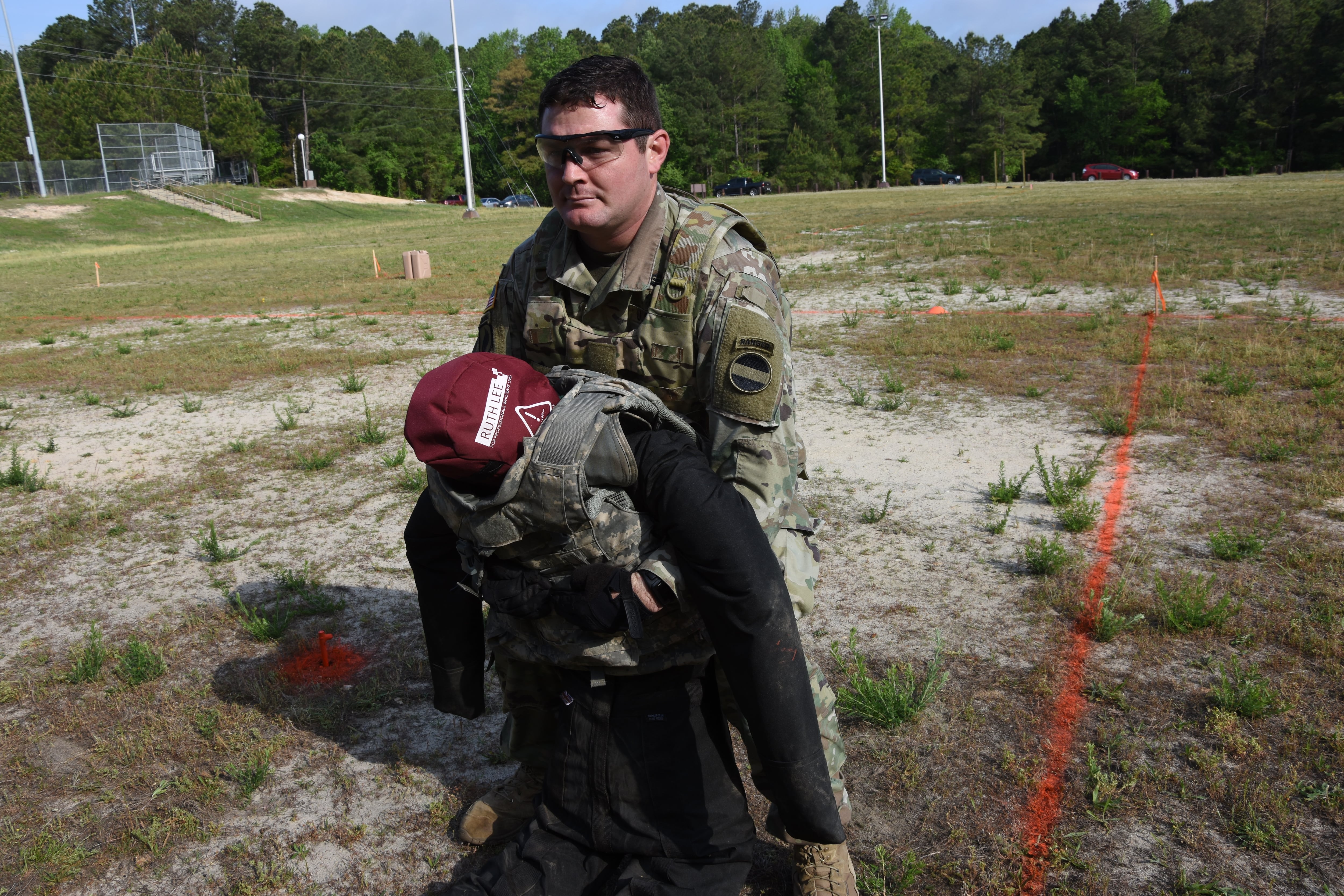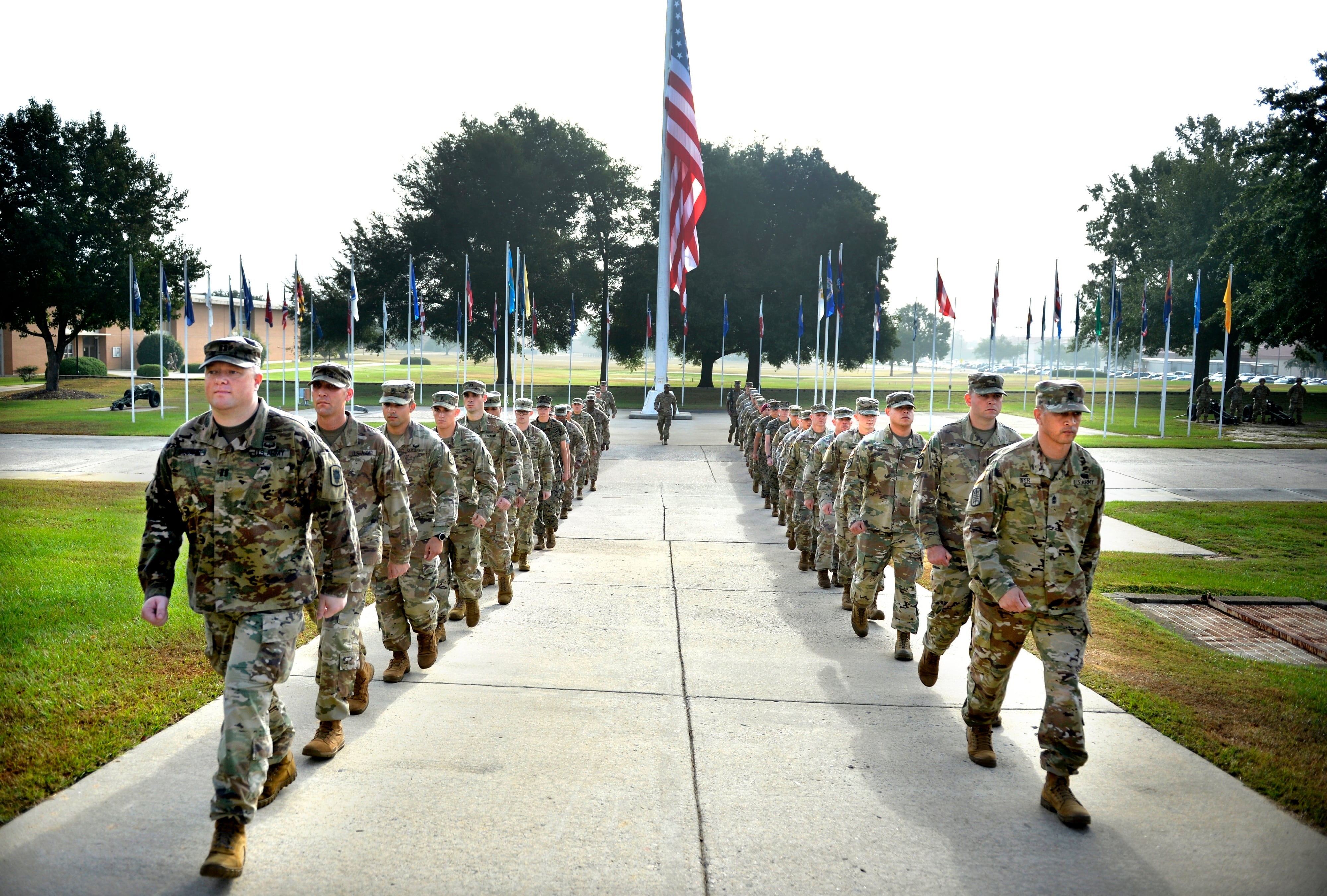The Army has spent the better part of a decade working on an update to the age-old PT test, one that better measures factors like the strength and agility to be effective in combat.
This month, the service moved one step closer when it conducted a pilot of the new Soldier Readiness Test at installations across the country.
Soldiers from four brigades are finishing up the first pilot of a six-event test developed by Army Forces Command, said Col. Mike Kirkpatrick, the director of leader development at FORSCOM, during a July 20 phone interview with Army Times.
"At the end of this, our goal is to transform the Army’s physical training culture to one that’s a more holistic approach to functional fitness, while reducing musculoskeletal injuries," Kirkpatrick said. "That ultimately leads to a more ready force that’s prepared to train, deploy, fight and win our wars.”
The gender-neutral assessment is meant to measure skills that mimic those needed on the battlefield, Kirkpatrick said.
Soldiers must complete the test in under 23 minutes while wearing fully body armor. The events include:
· 220-pound tire flips.
· An agility test.
· A 240-pound dummy drag.
· A sand-bag stack.
· A sand-bag toss.
· A 1 1/2-mile run on unimproved terrain.
Unlike the Army Physical Fitness Test, these events measure multiple facets of fitness: Explosive strength, agility, cardiovascular endurance, muscular endurance and muscular strength.
It’s also pass/fail and has gender-neutral standards.
“The APFT, as it stands right now, provides a snapshot in time of an individual soldier’s health, and really doesn’t effectively correlate to the unit-specific tasks and battle drills that soldiers are required to execute,” Kirkpatrick said.
FORSCOM picked four brigades from four different corners of the Army to test it out: 1st Stryker Brigade Combat Team, 2nd Infantry Division at Joint Base Lewis-McChord, Washington; 3rd Brigade, 1st Armored Division at Fort Bliss, Texas; 1st Brigade Combat Team, 10th Mountain Division at Fort Drum, New York; and the 20th Engineer Brigade, which has units at Fort Stewart, Georgia, Fort Knox, Kentucky, and Fort Bragg, North Carolina.
Testing ended July 21, and the project coordinators have until December to analyze the results and brief them to FORSCOM senior leadership, Kirkpatrick said.
“It’s hard to speculate on when it would be implemented,” he said.
Getting it right
The Soldier Readiness Test is a rebirth of the Army’s effort to do a better job measuring functional fitness, and the first idea to see daylight since the service scrapped a 2012 PT test overhaul.
The Army took the lessons learned from that false start, Sergeant Major of the Army Dan Dailey told Army Times on July 7.
“I felt, when I took over as the TRADOC sergeant major, that we were rushing into this,” he said.
This time around, he said, they’re taking their time.
And now, both TRADOC and FORSCOM are coming at a combat fitness test from different angles.
FORSCOM took inspiration from a wide range of expertise, Kirkpatrick said, from the Research Institute of Environmental Medicine to Army Special Operations Command and professional basketball teams.
Officials have not hammered out how the SRT would fit into the regular PT-testing cycle, but Kirkpatrick said it would not function the same way in terms of career effects.
“It’s not designed too be included into promotion boards or taken into consideration for awards and such, like that,” he said. “It’s more of an assessment of our physical readiness programs.”
In recent years the Army has pivoted from a hardcore training regime of repetition and exhaustion toward something more holistic that puts a focus on recovery, to prevent the overuse injuries that plague so many soldiers and bring down unit readiness.
A test is the natural progression of that idea, to see whether the functional fitness programs that so many units are promoting have any effect on physical readiness.
“Which in turn will decrease non-deployability just due to injury,” Kirkpatrick said.

The classic PT test will still have its place, Dailey said.
“The APFT has been around for a long time and it works. Is it the best thing? Absolutely not. We’ve known that for years,” Dailey said. “But it is the best when you talk about – you can do it in any environment with no equipment.”
The ease of administering the test is the reason the Army’s held onto it for so long, but it has limitations. It does not simulate combat-related tasks, for instance, and all three events measure one thing: endurance. It does not measure strength or agility, two necessities for a battlefield.
“If you can pass a PT test at the male or female standard, then you’re generally in good shape,” Dailey said. “It doesn’t prove that you can be an 11B, it doesn’t prove that you can be an artillery soldier, it doesn’t prove that you can be a fuel specialist. It doesn’t prove that you can be an 88M, which is a high physical demand task.”
Combat-ready
The SRT is the second new fitness test kicking around the Army this year, after the service made the Occupational Physical Assessment Test part of doctrine at the beginning of the year.
That test consists of a medicine ball throw and standing long jump to measure explosive strength — the maximum amount of force someone can exert at one time — as well as a deadlift to test general muscular strength and an interval run to measure measure speed.
That test, which also is gender-neutral, is administered to recruits and to soldiers changing MOSs, with a tiered grading system based on the physical demands of their chosen MOS.
“It shouldn’t be about gender,” Dailey said. “It shouldn’t be about where you’re from, or your religion, or any of that. It shouldn’t be about what your sexual orientation is – who cares? What it should be about is whether or not you can do the job. When a person, regardless of all those dynamics I just described, can meet the requirement of a physical assessment, then there’s no question. She lifted the artillery round and put it in the gun, and it fired and it killed the enemy.”
Following the roll-out of OPAT, both FORSCOM and TRADOC took steps toward a combat-specific test to be administered to units and at initial entry training, respectively, according to FORSCOM spokesman Jim Hinnant.
SRT, Kirkpatrick said, is designed to be administered and managed at the brigade level, as a litmus test of unit readiness but without ramifications.
In addition to the four brigades in the FORSCOM pilots, other units are able to administer a practice SRT, as the 46th Engineer Battalion at Fort Polk, Louisiana did on July 21, according to a new release.
That data won’t be used in the FORSCOM study, however, because the tests won’t be performed under the same controls as the official pilot.
Now that SRT’s pilot program is wrapping up, TRADOC will soon roll out a trial of it’s Combat Readiness Test, officials said.
Meghann Myers is the Pentagon bureau chief at Military Times. She covers operations, policy, personnel, leadership and other issues affecting service members.





